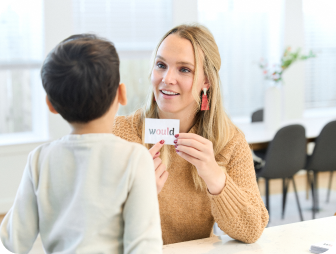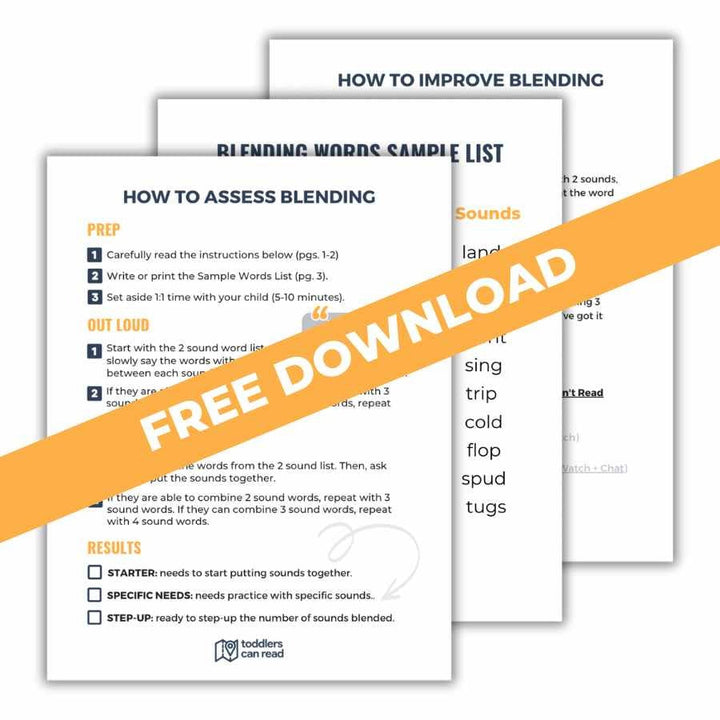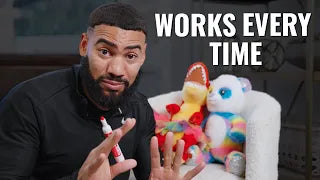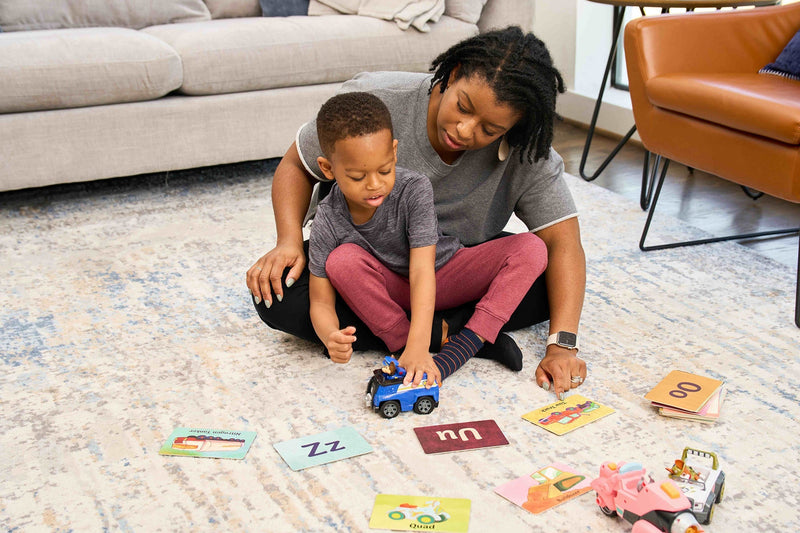When kids are first learning to read, their pace is often sooooo sllllooooow. To improve their reading speed, a lot of parents—and schools—have their kids simply practice the same words over and over and over again.
They think memorization creates speed. But it doesn't. Because that's not how our brains learn how to read.
In this blog post, you'll discover the two actual skills that are the secret to helping any child read faster. (And neither uses sight words!)
1. Letter Sounds and Phonics
The English language is like a code that uses symbols (letters) to represent sounds, and phonics is the key to unlocking this code. Phonics teaches readers which letters represent which sounds and how to put those letter sounds together to read words.
Spending just a few minutes each day practicing letter sounds with your little one can make all the difference along their reading journey. And as a lot of folks who use my courses will tell you, it can also be a lot of fun!
Check out some of the creative ways families have been practicing letter sounds:
Of course, even though knowing the letter sounds is a foundational reading skill, it's not the only skill kids need. That brings us to skill #2: blending.
2. Sounding Out Words (Blending)
Blending (sounding out words) is the skill that helps us put together letter sounds to read words. So if your little one is a slow reader, there's a good chance it's because they don't yet know how to blend.
Unlike learning how to walk or talk, blending is not something our brains learn how to do naturally. That means the only way our little ones will get better at blending is if we teach them— and give them lots and lots of practice.
Think of blending as a muscle: The more you use it, the stronger it will be. As grown-ups, we've been exercising our blending muscles since we first learned how to read. Since then, we've read hundreds of thousands of words (if not more). That makes reading feel automatic.
But when kids are little, their blending muscle is just starting to develop. So reading takes a lot more effort for them. That's why building a regular reading routine can be so helpful!
Advanced Phonics Sounds and Sight Words
Now, I know what you may be thinking: "Spencer, not all words can be blended! Some words don't follow phonics rules, so our kids have to memorize them as whole words!"
And honestly, I thought that for a long time, too. As a teacher, I believed that since so many words break the rules, it only made sense to teach them to my students using flashcards and memorization.
But as I learned more about the Science of Reading, I did a complete 180. No matter what you call them—sight words, tricky words, or high-frequency words—memorizing words simply doesn't help kids read better. Phonics and blending do!
Let's take a look at some words you might see on a sight word list your little one is expected to memorize:
- Play
- This
- Fly
- Wish
- Those
At first glance, it might seem like these words can't be sounded out and have to be memorized. But if your little one knows that...
- _ay says /ā/
- th says /th/
- _y says /ī/
- sh says /sh/
- And o_e says, /ō/...
... every single one of those words can be decoded. All we have to do is teach and practice those advanced phonics sounds, just like we did with the primary letter sounds.
For words that have irregular spellings, like those listed above, blending makes reading much easier. Instead of having your little one memorize a whole word because one part of the word breaks a rule, point out the parts of the word that do follow the rules and guide them to memorize only the part that doesn't.
By focusing on which sounds go with which letters (even if the spelling is irregular,) it'll be easier for your little one to commit that word to memory—and they'll get to strengthen their blending muscle along the way.
You can read more about how to teach tricky words in this blog post, or check out this free Tricky Words 101 resource.
Blending practice makes reading progress.
You may have heard that reading to your kids will get them reading faster. But while there are tons of great reasons to read to your kid, helping them pick up the pace is simply not one of them.
In fact, the only way to improve your little one's reading speed is to teach and practice phonics and blending. That will take your little one from struggling to put together words to being able to read any book that's put in front of them.
If the thought of helping your child learn the letter sounds and practice blending feels out of reach, check out my free Beginning Reading Workshop. Because it's a perfect introduction to phonics and blending, thousands of parents have used what they've learned in the workshop to accelerate their little one's reading journey.











